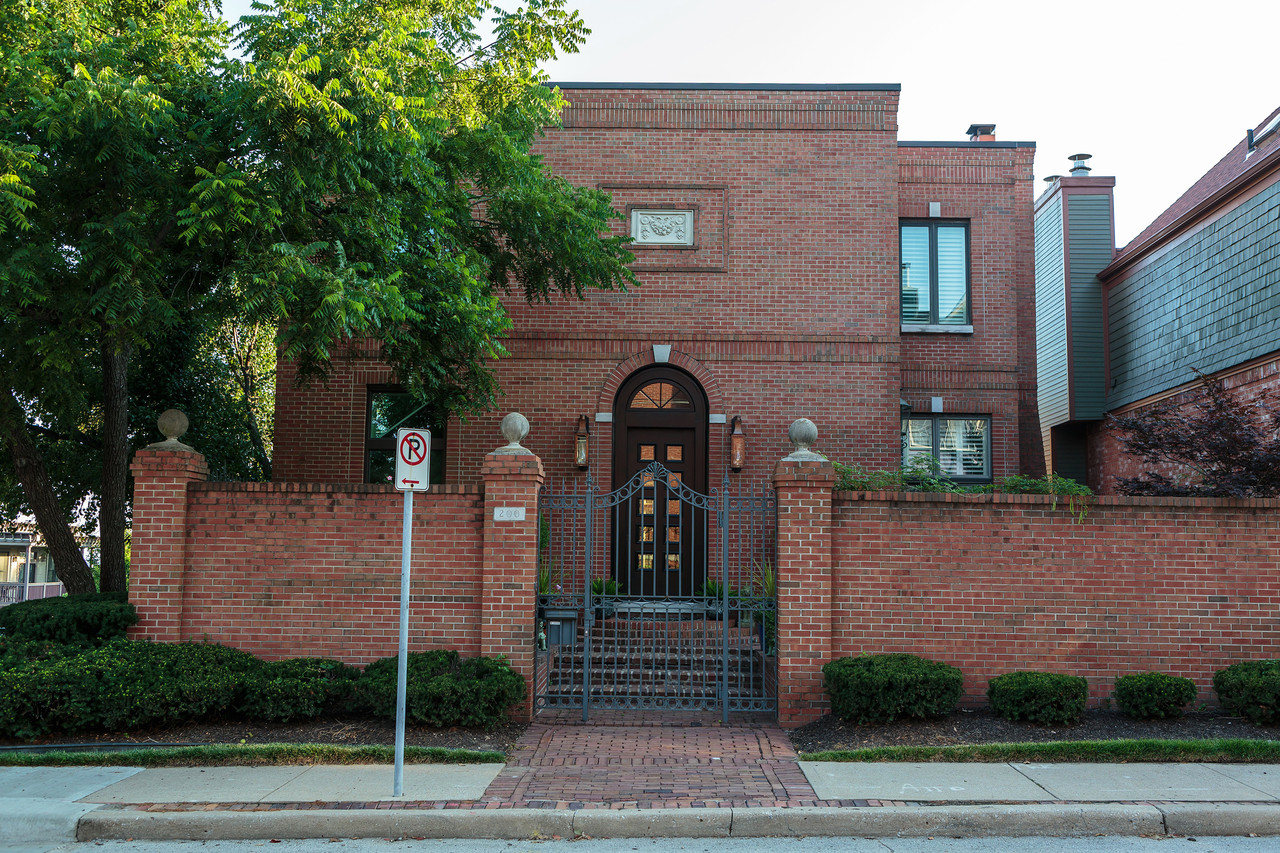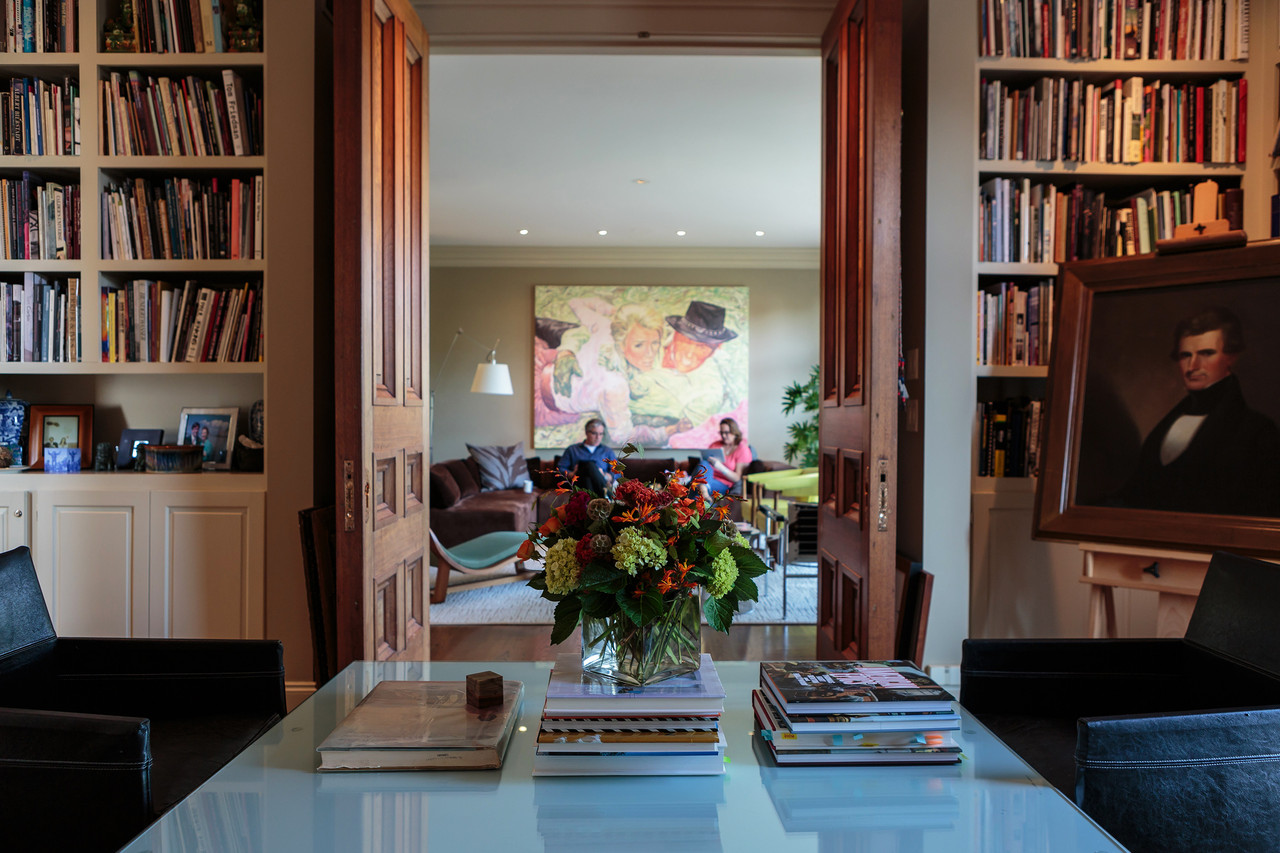Luxury Living in Downtown Kansas City – The Wall Street Journal
Missouri’s home of blues and barbecue draws young professionals and empty nesters downtown to million-dollar properties.
By ALINA DIZIK
Updated Aug. 6, 2015 5:41 p.m. ET
(Must have a Wall Street Journal subscription in order to access the full online version of the story)
Before moving from their traditional home in the suburbs, Terry Cracraft-Antin and her husband, Alan, purchased a raw space on the top four floors of 909 Walnut, a former bank building located in downtown Kansas City, Mo.
The 6,000 square feet of unfinished space took 2½ years to build, costing about $3 million, said Ms. Cracraft-Antin, who declined to disclose the purchase price. The couple, who have four adult children, now host cocktail parties in a billiards and bar area that overlooks their private rooftop terrace or host movie nights in their home theater.
“I always felt like a city girl,” says Ms. Cracraft-Antin, who with her husband manages a family stock portfolio.
With little glitz and fanfare, downtown Kansas City, Mo., has emerged as a top draw among empty nesters and young professionals looking for an urban lifestyle. Behind the surprising rise: a thriving arts scene, newly revamped public spaces and solid job growth. Luxury-home buyers are increasingly drawn to neighborhoods south of Country Club Plaza, an upscale shopping district, and those farther north near the Crossroads Arts District.
“K.C. has not experienced an urban core since the ’60s,” says Christina Boveri, a real-estate broker with a number of clients who work downtown and now want to live there as well. Low housing inventory has fueled competition among house hunters, forcing them to hasten their purchasing decisions, Ms. Boveri adds.
It is yet another example of what’s happening across the U.S. in places like Pittsburgh, Cleveland and San Antonio—cities that expanded beyond manufacturing into sectors like health care, education and technology. At the same time, large-scale downtown and waterfront revitalization projects have attracted affluent suburban home buyers like the Antins, as well as transplants from the East and West coasts.
Kansas City’s free-to-ride streetcar project opens early next year and will make 16 stops connecting a 2-mile stretch of the city’s downtown neighborhoods. The Kauffman Center for Performing Arts opened in 2011 and now houses the city’s lyric opera and symphony close to the city’s seven-year-old Power & Light entertainment district. The Nelson-Atkins Museum of Art expanded to a new building in 2007 and sits alongside the Kemper Museum of Contemporary Art in midtown.
“People are becoming more proud of Kansas City and celebrating all of the things it has besides the barbecue,” says Julián Zugazagoitia, a New York City transplant who is the director of the Nelson-Atkins museum.
In June, housing inventory was down 21% and properties spent 11.7% fewer days on the market compared with June 2014, according to a Kansas City Regional Association of Realtors report. Metro Kansas City, which covers the eponymous cities in both Missouri and Kansas, as well as their suburbs, has about 2.1 million residents, according to census data. The average sale price in the metro area was $212,984, a 5.5% increase from June 2014.
Jay and Leslie Tomlinson spent almost $1 million on a 1940s office building in the vibrant Crossroads Arts District and another $1 million to rehab it into six apartments that rent for between $1,300 and $1,600 a month. Mr. Tomlinson, an architect, added a third floor to build his own 2,500-square-foot unit—a modern loft with a wraparound terrace. Before its purchase in 2012, the building sat empty for nearly 10 years, says Mr. Tomlinson, who spent years commuting from the suburbs and would pass by the space. “For a while, we called it ‘the dream,’” says Mr. Tomlinson whose loft is located one block from his office.
Amy Hargroves, a telecommunications executive, recently moved to the Sunset Hill neighborhood, located south of Country Club Plaza. Ms. Hargroves and her husband, Jeff, now occupy an 8,000-square-foot, 1930s Georgian-style home with their two school-age children. The home, which they purchased for $2.7 million in 2014, has an outdoor pool area and a full basement with a theater—luxuries that can be rare in urban areas. “Even with a bunch of kids over, the house still feels spacious,” says Ms. Hargroves.
Postrecession, builders in Kansas City have been focusing on creating pricier custom homes loaded with artisanal details in the masonry, woodwork and outdoor living spaces, says Sara Corless, executive officer of the Home Builders Association of Greater Kansas City. In June, 433 building permits were issued for new construction single-family homes in greater Kansas City, compared with 262 four years ago, Ms. Corless says. Rather than creating large developments, many builders remain cautious and work on a small number of homes each year, she adds.
Some areas are still transitioning. Parts of a few neighborhoods can feel somewhat rundown and are less walkable. Families moving to these areas will also find fewer options for things such as supermarkets and schools.
After tearing down a handful of 1970s apartment buildings in the 150-year-old Union Hill neighborhood last year, developer Bob Frye is nearing completion on 12 single-family homes ranging from $400,000 to $500,000. Almost all of the roughly 2,200-square-foot homes are sold. While the neighborhood has always been popular with young professionals, the area is attracting more empty nesters and families, he adds. “We [are] competing more and more with suburban patio-home sort of communities,” says Mr. Frye, who has developed homes in the neighborhood for the past 30 years.
In 2011, art dealer Rachael Cozad paid more than $800,000 for a four-bedroom home in the Union Hill neighborhood. The home, which doubles as her office, has plenty of wall space to display her art collection. There is a Victorian-era fountain near the entrance and an outdoor terrace that she uses to host cocktail parties for up to 150 people. “We envisioned it as a multiuse space,” she says.

Some young families have been buying vacant lots in the city and building relatively small, modern homes, says architect Jerad Foster. While lots were once available for under $50,000, prices have more than doubled in the past few years and are often purchased through word-of-mouth, says Mr. Foster, who founded Studio Build in 2008. Many of these home buyers are willing to sacrifice space to move closer to restaurants and entertainment. “Walkability is kind of the trend,” he says.
After a five-year search, Jill McDonald and her husband, Antonio Gomez, in 2014 purchased a double lot in the trendy Westside neighborhood for $110,000. The couple, who run a children’s illustration business, worked with Mr. Foster and spent more than $500,000 to create a three-story home with a work studio on the upper level and a large front yard for their 8-year-old son, Luca. The couple used patterned wallpaper throughout the home and installed mustard-colored kitchen cabinets. Despite the modern interiors, the home has a traditional Monopoly-house exterior.
“I wanted to make it look like a basic house and kind of feel like it’s part of the neighborhood,” Ms. McDonald says.








